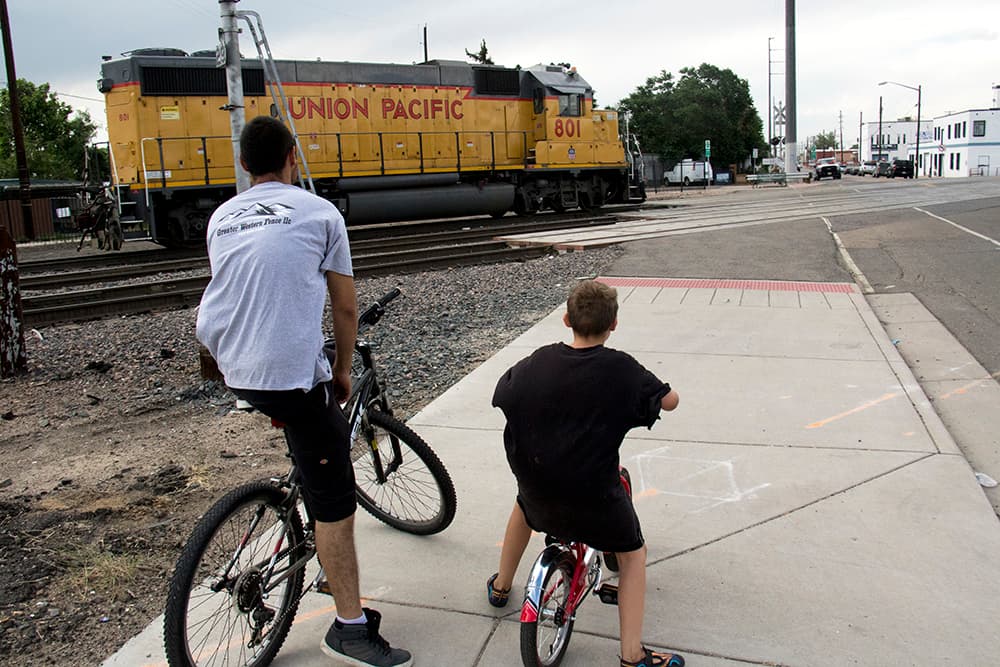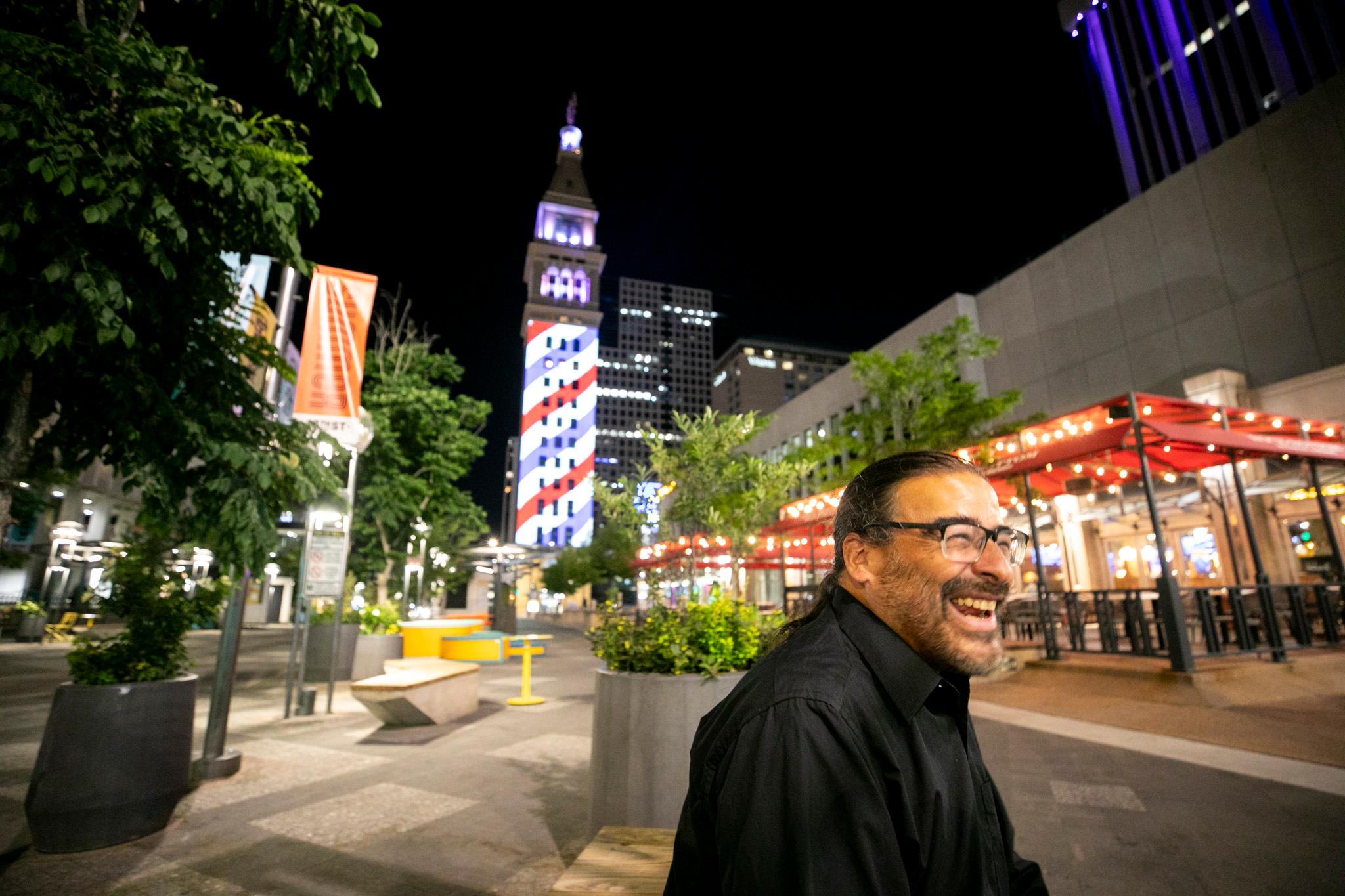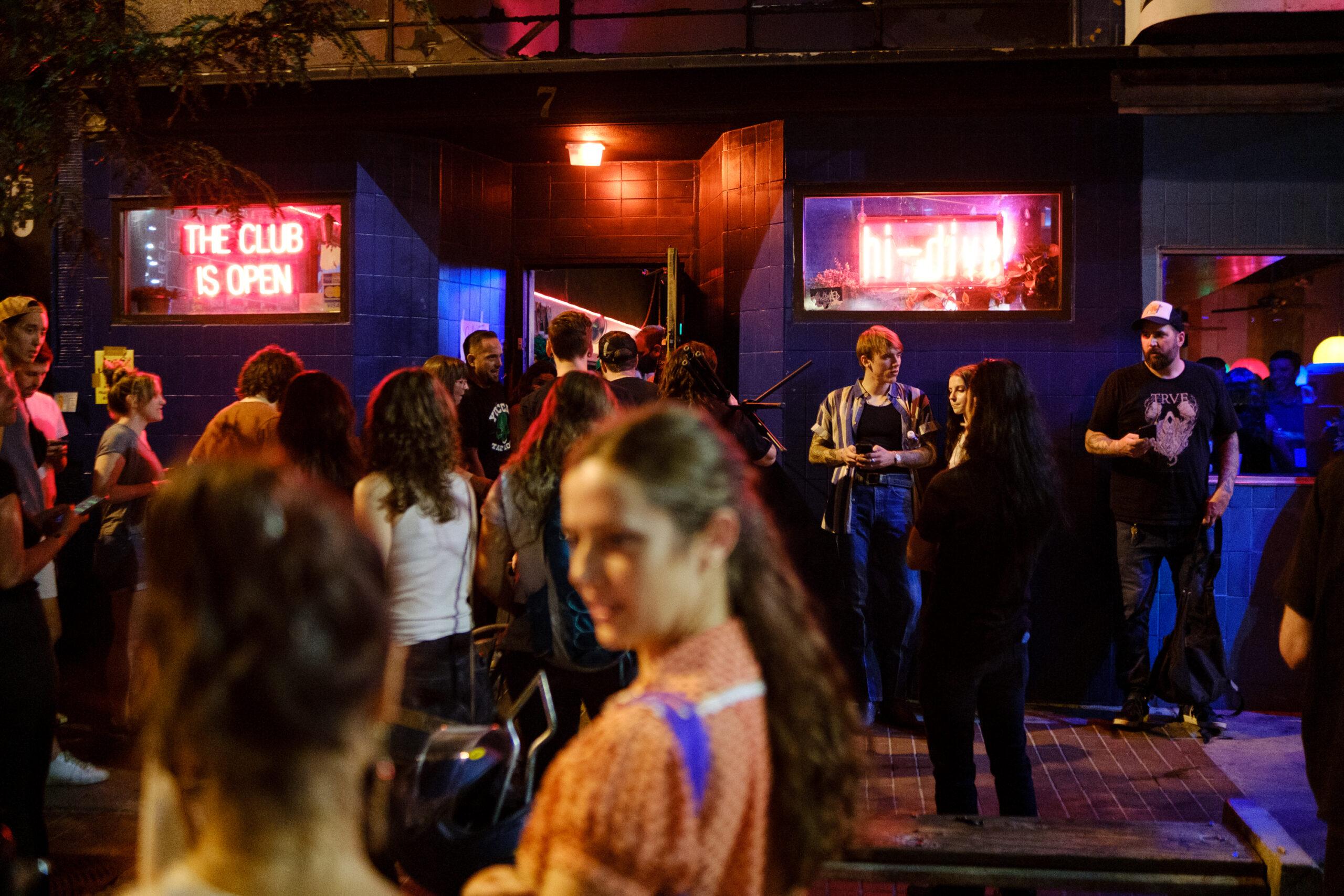
I'm going to editorialize a bit right out of the gate on this one. As a parent, this situation appalls me, and there is simply no way this would have gone on as long as it has in a more well-to-do neighborhood.
Rail lines cut through Elyria-Swansea with an at-grade crossing at 47th Avenue and York Street. Sometimes trains stop for extended periods of time, severing Elyria from Swansea and blocking children from getting to school at Swansea Elementary School. Sometimes kids miss the free breakfast provided at Denver Public Schools, and sometimes they miss the start of the school day. And sometimes, children clamber between the stopped train cars because they get tired of waiting.
"A lot of our students walk to school, and they come up to that train track. When the train is in the way, it can take several minutes to hours before they can cross. We have students and adults alike who will go under the cars or through the train to get across," said Kenia Abeyta, a parent liaison with United for Swansea, the parents' organization at the elementary school. "This is very risky. At any time the train could start moving."
Nola Miguel, director of the GES Coalition Organizing for Health and Housing Justice, said the crossing has been a problem for as long as she has worked in the community. Years ago, two students at Bruce Randolph High School came across a man who had been grievously injured by the train. They called for help and probably saved his life, but the experienced haunted them, she said.
No one can recall a case of a child being hurt, but everyone seems to agree that's a matter of luck, luck that may not hold.
The 2017 general obligation bond package that Denver City Council has placed on the ballot includes $9.4 million for a bike and pedestrian bridge that will provide a safe way over the tracks. The total project cost is estimated at around $12 million, with the rest of the money coming from a $2.5 million CDOT grant and a $1.5 million allocation from the city's capital improvement plan budget.
The bike and pedestrian bridge is one of a set of projects intended to benefit residents of the Globeville, Elyria and Swansea neighborhoods in northeast Denver as the city pours more than $1 billion into the creation of a new National Western Center in their midst and CDOT prepares to widen I-70. Long neglected by the city, these neighborhoods are now buffeted by rising rents and property taxes that are driving out long-time residents.
Other projects include: a $23 million reconstruction of Washington Street, $17 million for “pedestrian connectivity” in all three neighborhoods, where sidewalks are often missing, and $15.2 million for an indoor pool at Swansea Recreation Center.
Council President Albus Brooks, who represents the area, said he's "thrilled" about the level of investment.
"It says a lot about a city that it would support the 47th and York pedestrian bridge that connects Elyria and Swansea over a railroad and helps kids gets to school on time," he said. "It's probably the most proud I am of any project on the list."
Not all residents are satisfied with these projects. They're pushing for a community land trust to help long-time residents stay in their homes. Without it, they say, current residents won't be around to enjoy this safer, more walkable neighborhood. In fact, the resident who was perhaps most responsible for keeping the bridge on the radar of decision-makers at the city no longer lives in the neighborhood.
Oscar Gomez and his daughter Arizu have been fixtures at community and GO Bond meetings, advocating over and over again for the pedestrian bridge. Abeyta, the parent liaison with the local elementary school, said that until Gomez got involved, many residents reluctantly accepted the crossing as a fact of life, in spite of the dangers.
Gomez recently had to move to Adams County after his home was purchased by the city for the expansion of the National Western Center.
At a recent City Council meeting, the last opportunity for the public to speak on the GO Bond projects, Gomez made a moral case for the inclusion of the GES projects in the final package.
"This is not only important for me; it is important for all our children," he said. "There are barriers for our children. They can’t get to school on time. They can’t have their breakfast because there is a train that stops there on 47th and York.
"It doesn’t even matter that my cane gets stuck on the dirt because we don’t have sidewalks, but we shouldn’t have these barriers for our children," continued Gomez, who is visually impaired. "It’s important that they can get to our libraries, to our rec centers and especially that they get to school and get a good education."
"The bridge is very important to me and my friends. Thank you," Arizu Gomez said.
There are some physical constraints that making building the bridge difficult.
There are tiny little plots of property on either side of the crossing from which to stage the approach to the bridge. Preliminary designs show ramps reminiscent of water park slides in the number of twists and turns they take to get to 24 feet, 6 inches at a 5 percent grade, the slope required by the Americans with Disabilities Act. Children on bikes and people in wheelchairs need to be able to navigate these ramps.
The design led Councilman Rafael Espinoza to question whether elevators might be better. The concrete of the ramps will require maintenance and could be a target for graffiti, while elevators would allow room for a skate park or other community amenity in the landing areas.
Tricia Anstey, Denver's project integration manager for Globeville, Elyria and Swansea, said elevators are not practical when people have to navigate the crossing on bikes, and the city hasn't been in the habit of installing elevators, for the most part. RTD uses elevators in many of its bridges, but with the exception of one pedestrian and bike bridge in RiNo, the city has not.
"For elevators, we ultimately create this issue of cyclists not being able to get into elevators, so it creates issues for connectivity and for safety if it were to break down and for maintenance," Anstey said. "If something breaks down, you cannot use the bridge, and it's a one-mile detour that is not really feasible.
"It's not about dollars. It's about safety, connectivity and greatest benefit to the community."
If voters approve the $937 million bond program that includes the 47th and York bridge, the design would be finalized in 2018 and construction would occur in 2019 and 2020, city officials said.
"This has been the priority of the neighborhood for so long," Anstey said. "We are very much committed to having this happen. It is a significant need for the community. We are in partnership to make this happen."










